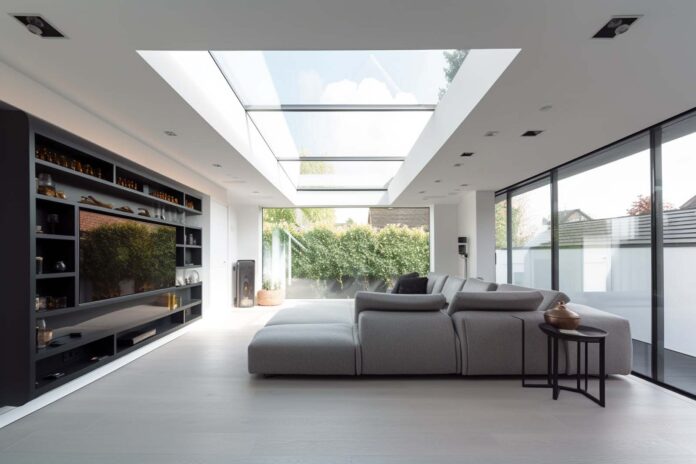Selecting the right skylight for your home is a decision that can greatly impact your living space. The right skylight not only brings in natural light but also enhances the overall aesthetics and functionality of your home. However, with numerous options available, it can be overwhelming to make the best choice.
That’s why this article aims to provide you with a comprehensive guide to help you navigate the selection process with confidence. We will explore six key things to check before selecting a skylight, ensuring that you make an informed decision that meets your specific needs and preferences. Let’s dive in and discover how to find the perfect skylight for your home!
1. Assessing Your Space and Needs
Before selecting a skylight, it’s essential to evaluate the available space for installation. Consider the size and layout of the room where you plan to install the skylight. Assess the roof area above to ensure there is enough room for proper placement and to accommodate the skylight’s dimensions. Taking accurate measurements will help you determine the appropriate size and positioning for optimal light distribution.
Determining the purpose and desired benefits of the skylight is crucial in selecting the right option. Reflect on your specific goals for installing a skylight. Are you seeking more natural light to brighten up a dark room? Do you want to enhance the visual appeal of your space? Are energy efficiency and ventilation important factors for you? Understanding your needs and desired benefits will guide you towards the appropriate skylight design, glazing options, and additional features that align with your goals. Taking the time to clarify your purpose will ensure that the skylight you choose fulfils your expectations and enhances your home in the desired ways.
2. Understanding Different Types of Skylights
When selecting a skylight for your home, it’s important to explore the various designs and styles available. There are several popular options to consider, such as fixed skylights, vented skylights, tubular skylights, and skylight windows. Each design offers unique features and functionality that can significantly impact the lighting, ventilation, and overall aesthetic of your space. Take the time to explore these different designs and envision how they would complement your home’s architecture and interior design.
Along with exploring the various skylight designs, it’s crucial to consider the pros and cons of each type. Fixed skylights, for instance, provide a cost-effective solution for bringing in natural light but lack ventilation options. Vented skylights, on the other hand, offer the benefit of both natural light and ventilation but may require additional mechanisms for proper operation. Tubular skylights are ideal for smaller spaces and can effectively bring natural light into areas with limited roof space. Skylight windows provide the flexibility of opening and closing, allowing for airflow and easy access to the roof. Understanding the advantages and disadvantages of each skylight type will help you make an informed decision based on your specific needs, preferences, and requirements for your space.
3. Considering Natural Lighting and Energy Efficiency
When selecting a skylight for your home, it’s important to assess the amount of natural light needed in the space. Consider the purpose of the room and how much illumination is desired. If you’re looking to brighten up a dark room, you may want a skylight that allows ample natural light to flood the space. Alternatively, if you’re seeking a softer, diffused light effect, you might opt for a custom rooflights with glazing options that provide a more subtle illumination. By evaluating the desired level of natural light, you can choose a skylight that meets your specific lighting needs.
Understanding the skylight’s impact on energy efficiency is crucial to make an environmentally conscious choice. Skylights have the potential to both contribute to and reduce energy consumption in your home. Factors such as the skylight’s glazing, insulation properties, and solar heat gain coefficient (SHGC) can greatly affect energy efficiency. Consider skylights with low-E coatings to minimize heat loss in the winter and reduce heat gain during the summer. Additionally, look for skylights with proper insulation and weather sealing to prevent air leaks and ensure optimal energy performance. By choosing an energy-efficient skylight, you can enjoy natural light while minimizing energy consumption and lowering your utility costs.
3. Evaluating Installation and Structural Considerations
Before selecting a skylight, it’s crucial to assess the roof structure and slope suitability. Different skylight types may require specific roof conditions for proper installation. Consider the pitch and material of your roof to determine if it is compatible with the skylight you have in mind. Additionally, assess the available space and structural support to ensure that the roof can accommodate the skylight’s size and weight. By evaluating these factors, you can determine the feasibility of installation and avoid any potential structural complications.
Understanding the potential impact on the roof’s integrity is essential when installing a skylight. Adding a skylight involves cutting a hole in the roof, which requires proper flashing and sealing to maintain a watertight barrier. Improper installation or failure to address potential leakage points can result in water damage and compromise the roof’s integrity. It’s advisable to consult with a professional roofing contractor or skylight installer to ensure that the installation process is performed correctly and does not pose any risks to the roof’s structure and durability. By considering the impact on the roof’s integrity, you can make an informed decision and proceed with confidence in the safety and longevity of your skylight installation.
4. Researching Skylight Materials and Glazing Options
When selecting a skylight, it’s essential to explore different materials available, such as glass and acrylic. Glass skylights offer excellent durability and clarity, allowing for maximum light transmission. They are also resistant to discolouration and scratches over time. Acrylic skylights, on the other hand, are lightweight and impact-resistant, making them a suitable choice for areas prone to extreme weather conditions. Consider the specific characteristics of each material and how they align with your needs, preferences, and budget.
Understanding the benefits of different glazing options is crucial in selecting the right skylight for your home. Low-emissivity (low-E) coatings can help to improve energy efficiency by reducing heat transfer and UV radiation. They can minimize heat loss during colder months and prevent excessive heat gain in the summer. Tinted glass options provide additional benefits, such as glare reduction and enhanced privacy. Consider the specific climate and orientation of your home when choosing glazing options to optimize energy efficiency and comfort.
5. Reviewing Safety and Security Features
Understanding safety measures is crucial when selecting a skylight. Look for skylights with tempered glass, which is designed to break into small, less harmful pieces if shattered. This reduces the risk of injury in case of accidental breakage. Additionally, ensure that proper installation techniques are followed, including secure attachment to the roof structure and appropriate flashing to prevent leaks. Understanding and prioritizing safety measures will help ensure a safe environment for you and your family.
Considering security options is important to protect your home. Opt for skylights with impact-resistant glass, which is designed to withstand strong impacts and prevent intrusion. Impact-resistant glass adds an extra layer of security against break-ins, making your home more secure. Additionally, explore skylights with added locking mechanisms to enhance the overall security of your skylight. Taking these security features into account will give you peace of mind and contribute to a safer living environment.
6. Budgeting and Cost Considerations
Determining the skylight budget and associated costs is an essential step in the selection process. Evaluate your budget and allocate funds specifically for the skylight project. Take into account not only the cost of the skylight itself but also any additional expenses such as installation, flashing, and sealing materials. Consider consulting with skylight professionals or contractors to obtain accurate cost estimates based on your specific requirements and desired features.
Assessing the long-term cost benefits of energy-efficient skylights is equally important. Although energy-efficient skylights may have a higher upfront cost, they can result in significant long-term savings. Energy-efficient skylights reduce the need for artificial lighting during the day, resulting in lower electricity bills. Additionally, they can improve insulation and reduce heating and cooling costs by minimizing heat transfer. Evaluate the potential energy savings and calculate the return on investment over time to determine the overall cost benefits of energy-efficient skylights.
In conclusion
Selecting the right skylight for your home requires careful consideration of various factors. By assessing your space and needs, understanding different skylight types, evaluating natural lighting and energy efficiency, reviewing installation and structural considerations, researching skylight materials and glazing options, reviewing safety and security features, and considering budget and cost considerations, you can make an informed decision that meets your specific requirements.
Don’t rush through the process – take the time to explore the options and consult with professionals if needed. With the perfect skylight, you can transform your space with abundant natural light, energy efficiency, and enhanced aesthetics. So, go ahead and let the beauty of the sky shine through in your home. Take action now and choose the ideal skylight that will elevate your living space to new heights!














